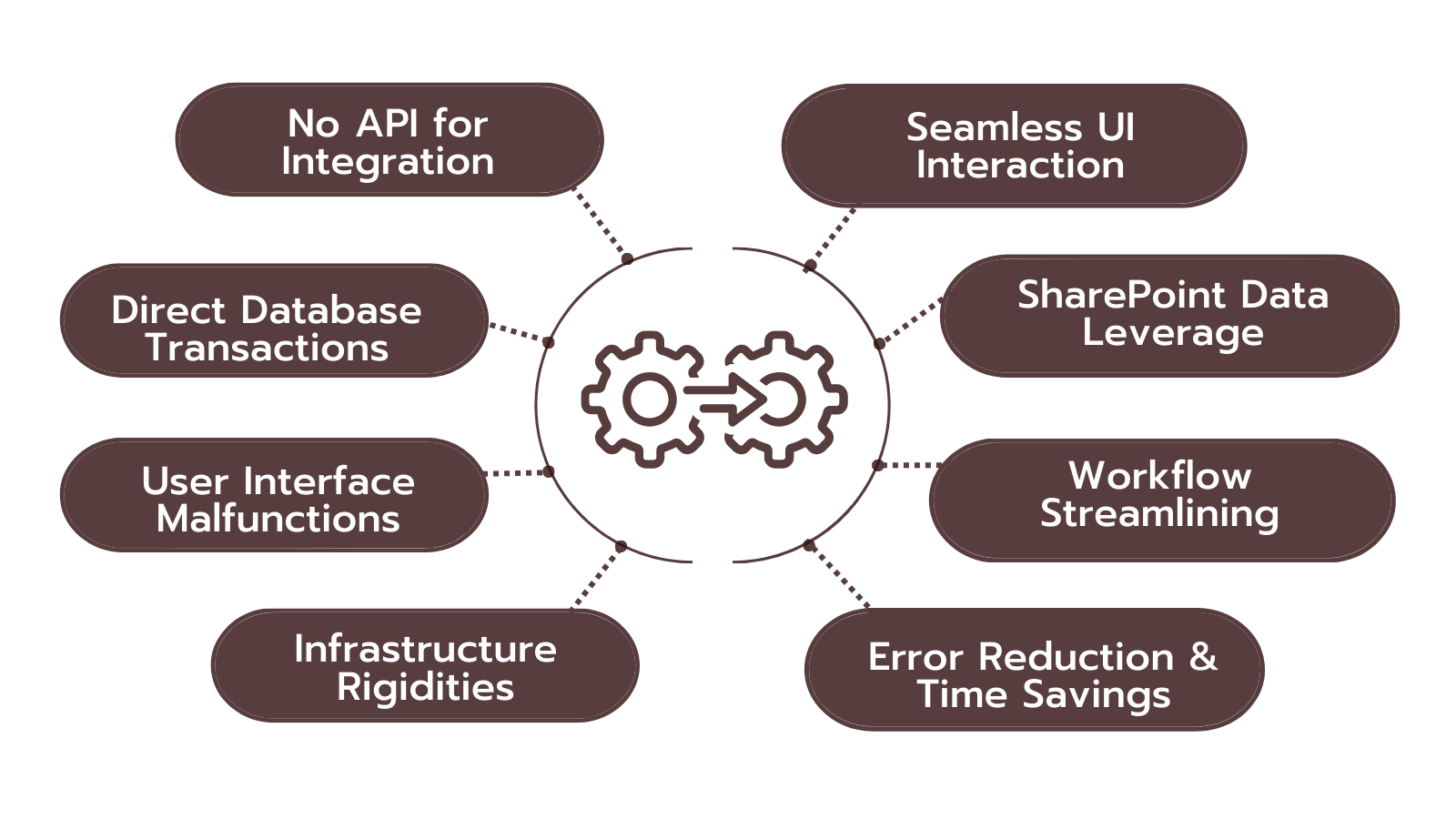In the ever-evolving landscape of technology, businesses often find themselves grappling with legacy systems that pose challenges in terms of integration, efficiency, and flexibility. However, with the advent of Robotic Process Automation (RPA), organizations are discovering innovative solutions to these longstanding issues.
Consider the scenario of a company relying on an old, locally developed application to control employee entry to its factories. This application, which is key to managing shifts and tracking employee movements, had no API interface for easier modifications, could only be manipulated by IT tools through direct database transactions. This method bypasses basic business logic and validation rules for data entry via the GUI - making it easier to cause malfunctions. Enter RPA, the game-changer in automating repetitive tasks and integrating systems that traditional IT solutions struggle to address. Leveraging the UiPath RPA framework, our committed team embarked on a journey to rationalize operations and enhance productivity.
The main challenge was to communicate with the thick client technology based legacy system. However, the non-invasive nature of RPA proved invaluable, as it allowed seamless interaction with the application's user interface without the need for extensive infrastructure changes. This ensured a smooth integration process, minimizing disruptions and maximizing efficiency. A key to the success of the RPA implementation was the ability to easily leverage background data from SharePoint, the repository for shift information. By automating the extraction and modification of data based on SharePoint records, the RPA solution eliminated the need for manual intervention, saving time and reducing the risk of errors.

The impact of RPA went beyond automation itself; it changed the entire workflow, freeing employees from routine and time-consuming tasks. What used to be a laborious job done by a few unlucky ones has now become a streamlined, efficient process, easily managed by the RPA robot. This not only freed up valuable human resources but also enhanced the quality and accuracy of data processing, thanks to the machine's ability to perform transactions faster and execute comprehensive checks.
Looking ahead, the future of RPA within the organization appears promising. With a proven track record of delivering cost-effective and rapid solutions to existing challenges, UiPath RPA has earned the trust and admiration of stakeholders. As the organization continues to innovate and evolve, RPA stands poised to play a pivotal role in driving efficiency, agility, and growth.
In summary, the integration of traditional thick-client technology based legacy systems with RPA is a good example of the transformative power of technology in modernizing business operations. By increasing automation and leveraging innovative solutions in general, organizations can unlock new levels of efficiency, productivity and competitiveness in an increasingly dynamic market.